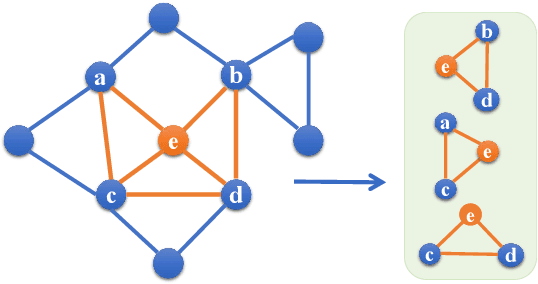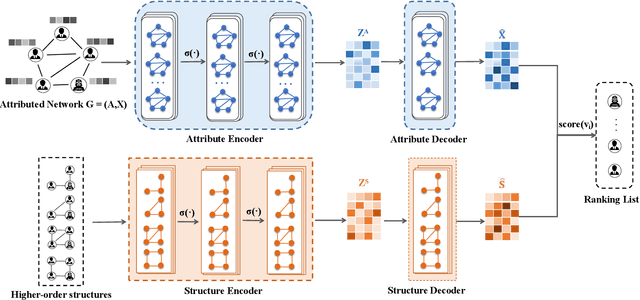Higher-order Structure Based Anomaly Detection on Attributed Networks
Paper and Code
Jun 07, 2024



Anomaly detection (such as telecom fraud detection and medical image detection) has attracted the increasing attention of people. The complex interaction between multiple entities widely exists in the network, which can reflect specific human behavior patterns. Such patterns can be modeled by higher-order network structures, thus benefiting anomaly detection on attributed networks. However, due to the lack of an effective mechanism in most existing graph learning methods, these complex interaction patterns fail to be applied in detecting anomalies, hindering the progress of anomaly detection to some extent. In order to address the aforementioned issue, we present a higher-order structure based anomaly detection (GUIDE) method. We exploit attribute autoencoder and structure autoencoder to reconstruct node attributes and higher-order structures, respectively. Moreover, we design a graph attention layer to evaluate the significance of neighbors to nodes through their higher-order structure differences. Finally, we leverage node attribute and higher-order structure reconstruction errors to find anomalies. Extensive experiments on five real-world datasets (i.e., ACM, Citation, Cora, DBLP, and Pubmed) are implemented to verify the effectiveness of GUIDE. Experimental results in terms of ROC-AUC, PR-AUC, and Recall@K show that GUIDE significantly outperforms the state-of-art methods.
 Add to Chrome
Add to Chrome Add to Firefox
Add to Firefox Add to Edge
Add to Edge